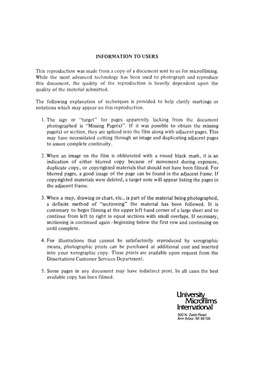| dc.contributor.author | Brandes, Edward A., | en_US |
| dc.date.accessioned | 2013-08-16T12:28:55Z | |
| dc.date.available | 2013-08-16T12:28:55Z | |
| dc.date.issued | 1983 | en_US |
| dc.identifier.uri | https://hdl.handle.net/11244/5145 | |
| dc.description.abstract | The data show that vertical vorticity production in tornadic storms begins at the very roots of the updraft as horizontal vorticity associated with low level environmental air is tilted toward the vertical. The vertical vorticity produced is amplified by the convergence mechanism within strong updraft to create the low level mesocyclone. | en_US |
| dc.description.abstract | A sudden intensification of mesocyclone rotation, particularly at low levels, heralds the tornadic stage and transforms the mesocyclone. Updrafts and rainy downdrafts are strong at this critical stage and interact to locally increase convergence. Low level vorticity amplification by the convergence mechanism surges, exceeding maximum twisting term generation by a factor of 2 or more. Tornadoes feed upon low level air which passes through the region of strong convergence term amplification and are most likely triggered by that vorticity production. | en_US |
| dc.description.abstract | A methodology for obtaining pressure and potential temperature deviations in thunderstorm flows reconstructed from Doppler radar observations is described. Results are combined with detailed vorticity analyses to study properties of severe thunderstorm circulations (mesocyclones) known to have spawned tornadoes. | en_US |
| dc.description.abstract | The dependence on vorticity causes the low level pressure deficit associated with the mesocyclone to deepen during intensification. Upward perturbation pressure gradients in vicinity of the mesocyclone are reduced and can be reversed by the build-up of low level vorticity. The sudden formation of concentrated rear downdrafts commonly observed in tornadic thunderstorms results from the vertical pressure gradient reversal. Mesocyclone intensification may also precipitate storm decline. The reduction in the vertical perturbation pressure gradient decreases the storm's ability to lift negatively buoyant air at the base of updrafts. Further, downdraft formation results in a flux of air parcels into the mesocyclone from higher levels on the storm's rear. This air is potentially cold and when mixed with updraft air reduces buoyancy in middle storm levels. In final stages, updrafts weaken and downdrafts fill the mesocyclone. | en_US |
| dc.format.extent | viii, 185 leaves : | en_US |
| dc.subject | Physics, Atmospheric Science. | en_US |
| dc.title | Relationships between thunderstorm mesoscale circulation and tornadogenesis. | en_US |
| dc.type | Thesis | en_US |
| dc.thesis.degree | Ph.D. | en_US |
| dc.thesis.degreeDiscipline | School of Meteorology | en_US |
| dc.note | Source: Dissertation Abstracts International, Volume: 44-06, Section: B, page: 1861. | en_US |
| ou.identifier | (UMI)AAI8324873 | en_US |
| ou.group | College of Atmospheric & Geographic Sciences::School of Meteorology | |
